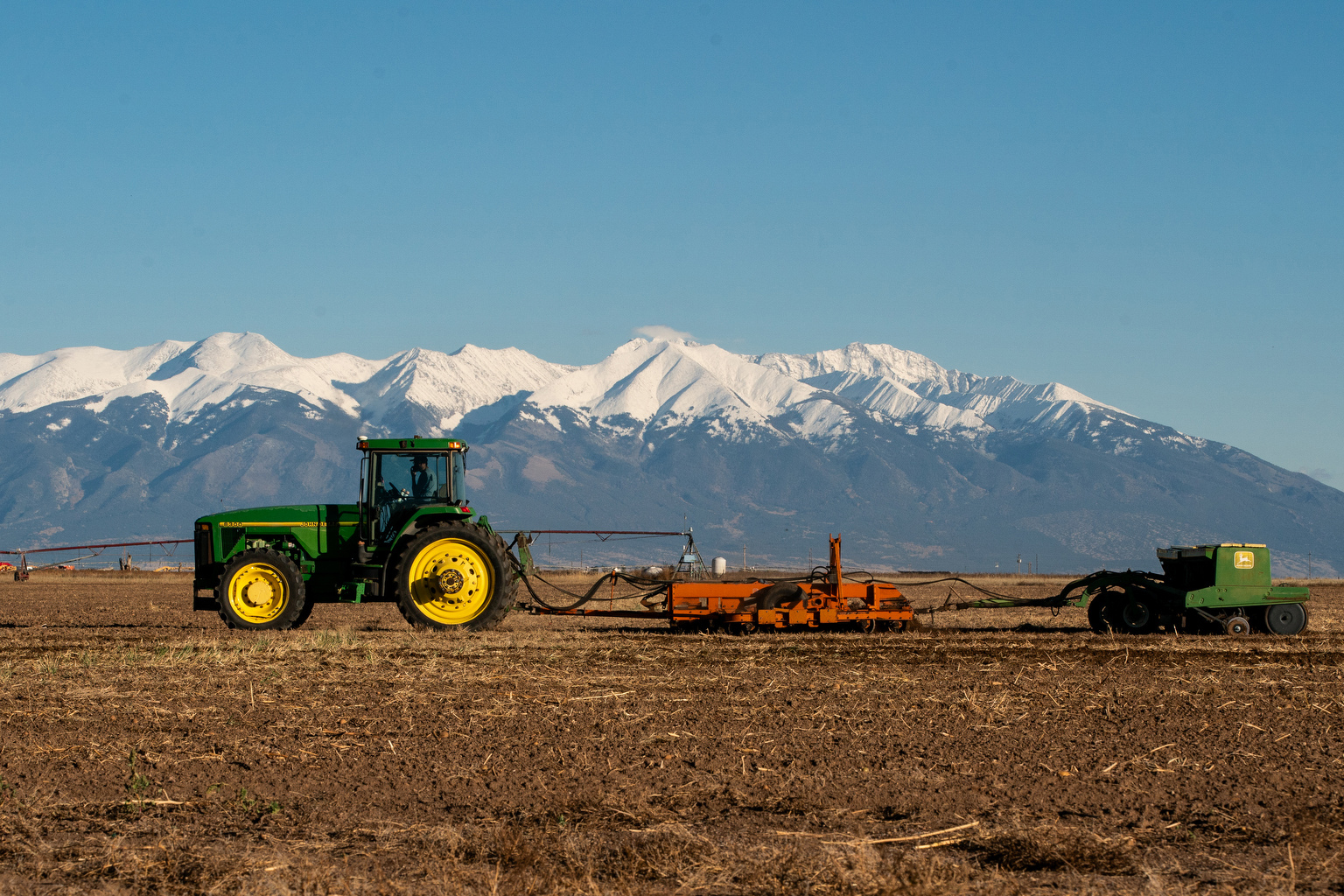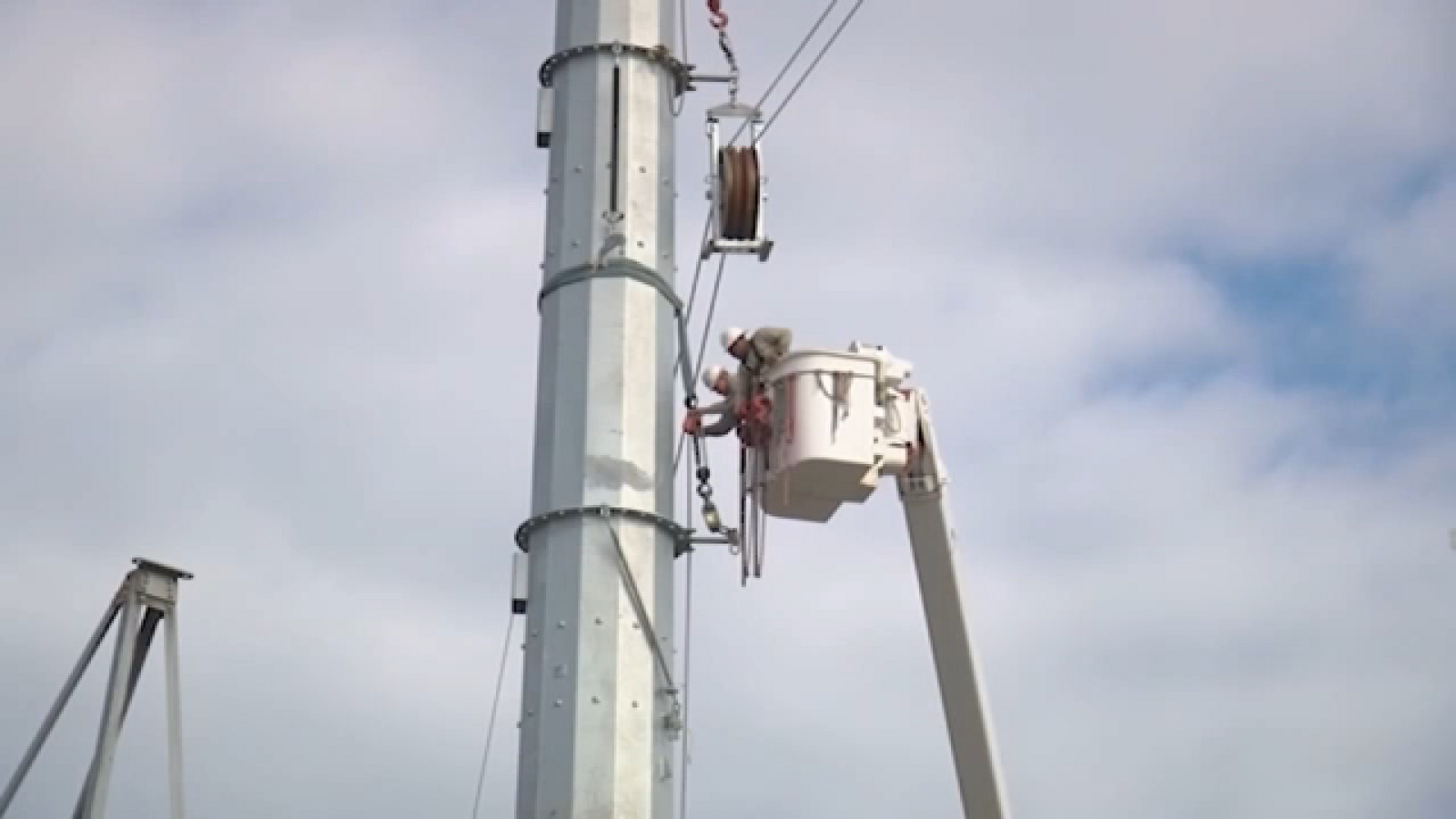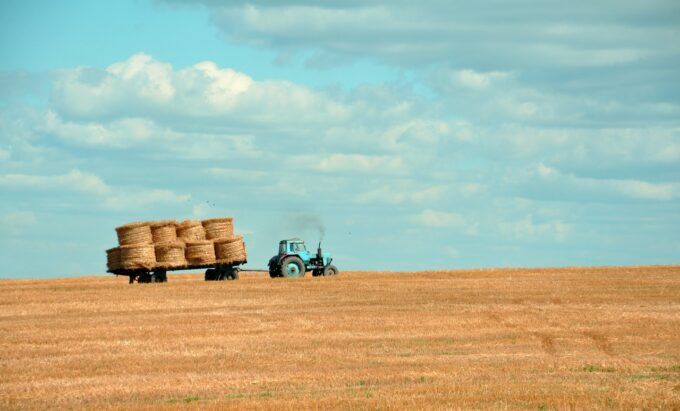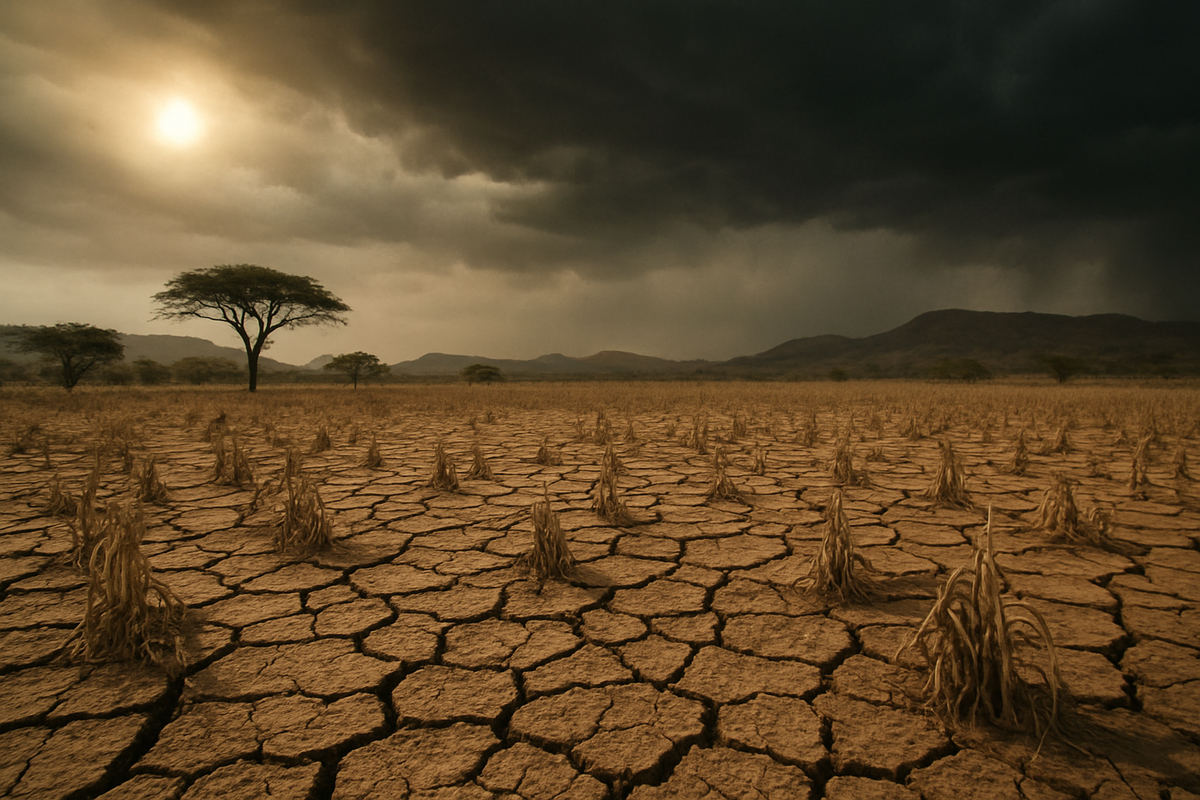America’s Rye Whiskey Resurgence Could Help the Climate, but Not by Itself – Inside Climate News

Report on Rye Cultivation as a Catalyst for Sustainable Development Goals in U.S. Agriculture
Introduction: Addressing Environmental and Economic Pressures in the San Luis Valley
Agricultural communities in the San Luis Valley, Colorado, face significant environmental challenges, including severe dust storms, topsoil erosion, and water scarcity. These issues directly threaten local livelihoods and ecosystems, undermining progress toward several Sustainable Development Goals (SDGs). This report examines the implementation of rye cultivation as a strategic intervention to mitigate these challenges, analyzing its contributions to environmental resilience, economic stability, and community well-being in alignment with the UN SDGs.
Environmental Degradation and its Impact on Sustainable Development
The prevailing conditions in the San Luis Valley present direct obstacles to achieving key SDGs. The increasing frequency and intensity of dust storms have severe consequences:
- SDG 15 (Life on Land): The loss of topsoil degrades land, reduces agricultural productivity, and contributes to desertification.
- SDG 11 (Sustainable Cities and Communities): Dust storms create hazardous conditions, impacting public safety, transportation, and air quality, as evidenced by a 15-car pile-up and official emergency weather warnings.
- SDG 3 (Good Health and Well-being): Poor air quality from dust poses risks to respiratory health.
Rye Cultivation: An Integrated Solution for Sustainable Agriculture
The adoption of rye as a cover crop and a cash crop offers a multifaceted solution that directly supports numerous SDGs. Its ecological and economic benefits create a synergistic effect, promoting a more sustainable and resilient agricultural system.
Advancing Climate Action and Life on Land (SDG 13 & 15)
Rye’s properties make it a powerful tool for climate mitigation and land restoration.
- Soil Stabilization and Erosion Control: Rye’s extensive root system, which can grow up to six feet deep, binds the soil, preventing wind erosion. This directly addresses land degradation as targeted by SDG 15. Fields planted with rye demonstrate clear air and stable ground, in stark contrast to bare fields.
- Carbon Sequestration: The deep root structure is highly effective at sequestering atmospheric carbon in the soil, contributing to climate change mitigation efforts outlined in SDG 13.
- Enhanced Biodiversity: Cover cropping improves soil biology and structure, creating a healthier ecosystem for microorganisms and supporting overall biodiversity on agricultural lands.
Enhancing Water Resources and Ecosystems (SDG 6 & 14)
Rye cultivation significantly improves water management and protects aquatic environments.
- Improved Water Infiltration and Retention (SDG 6): Enhanced soil structure from rye cultivation increases water absorption. One case study showed a 40-fold increase in water infiltration (from 0.5 inches to 20 inches per hour), which helps recharge aquifers and makes farms more resilient to drought.
- Reduced Nutrient Runoff (SDG 14): Research indicates that rye cover crops can reduce nitrogen leaching by 30 percent. This prevents agricultural pollutants from entering waterways, which helps mitigate the formation of hypoxic “dead zones” in bodies of water like the Gulf of Mexico, thus protecting life below water.
Promoting Economic Growth and Responsible Production (SDG 8 & 12)
Developing a market for rye transforms it from a soil-conservation tool into a viable cash crop, fostering economic sustainability.
- Economic Diversification and Farmer Livelihoods (SDG 8): Initiatives like the Rye Resurgence Project connect growers with buyers, creating new revenue streams. This transition from a cover crop to a cash crop provides farmers with a financial incentive to adopt sustainable practices, supporting decent work and economic growth in rural areas. In 2024, these efforts led to a 4,000-acre increase in rye planting in the San Luis Valley.
- Market Development and Responsible Consumption (SDG 12): A “rye renaissance,” driven by the craft whiskey and food industries, is creating demand. U.S. rye whiskey sales increased by 1,706 percent between 2009 and 2021. By educating consumers and creating products like rye-based pizza dough and beer, producers are building a sustainable supply chain that links consumer choices directly to positive environmental outcomes.
Challenges and the Path Forward: The Importance of Partnerships (SDG 17)
Despite its potential, scaling up rye production faces several hurdles that require collaborative solutions, underscoring the importance of SDG 17 (Partnerships for the Goals).
Barriers to Adoption
- Logistical and Infrastructure Gaps: Farmers face challenges with market access, including long-distance transportation to delivery points and a lack of local grain elevators that accept rye.
- Market Volatility: The high-quality standards for distilling and milling mean not all crops are accepted, necessitating the development of secondary markets such as livestock feed to ensure financial security for farmers.
- Consumer Perception: A common misconception in the U.S. associates the taste of rye with caraway seeds, limiting its perceived culinary applications.
Strategic Opportunities through Collaboration
Overcoming these barriers requires strong partnerships between farmers, non-profits (e.g., Rye Revival, American Farmland Trust), businesses, and consumers.
- Building Local Supply Chains: Connecting local farmers with local businesses, such as the partnership between Jones Farm Organics and Joy Hill pizza restaurant, demonstrates a successful model for a closed-loop, sustainable economy.
- Engaging “Big Food”: Securing commitments from large corporations to incorporate a small percentage of rye into mass-market products, such as hamburger buns, could create massive demand and drive widespread adoption of sustainable practices.
- Domestic Sourcing: Shifting from imported rye (primarily from Canada) to U.S.-grown rye would localize the economic and environmental benefits, strengthening domestic food systems and communities.
Conclusion: Rye as a Model for Integrated Sustainable Development
The expansion of rye cultivation in the United States serves as a compelling model for achieving multiple Sustainable Development Goals simultaneously. It demonstrates that agricultural practices can be designed to restore ecosystems (SDG 15), combat climate change (SDG 13), protect water resources (SDG 6, 14), and provide sustainable livelihoods (SDG 8). By fostering partnerships (SDG 17) and promoting responsible consumption and production (SDG 12), rye can transform from a niche crop into a cornerstone of a resilient and sustainable American food system.
Analysis of Sustainable Development Goals (SDGs) in the Article
1. Which SDGs are addressed or connected to the issues highlighted in the article?
-
SDG 2: Zero Hunger
The article focuses on sustainable agricultural practices. By promoting rye as a cover crop, farmers can build healthier, more resilient soil, which is fundamental for long-term food security and sustainable food production. The discussion on turning rye into a “cash crop” also supports the economic viability of farming communities.
-
SDG 6: Clean Water and Sanitation
The article highlights how rye cultivation improves water management. It mentions that rye’s deep roots create a “sponge-like effect that absorbs and retains more water” in the soil. Furthermore, it directly addresses water quality by stating that rye “reduces nitrogen leaching by 30 percent,” preventing nutrient runoff that pollutes water bodies.
-
SDG 8: Decent Work and Economic Growth
The article discusses creating new economic opportunities for farmers by developing markets for rye. The efforts of the “Rye Resurgence Project” to connect growers with buyers and turn a cover crop into a profitable “cash crop” contribute to boosting small farm profitability and supporting local economies.
-
SDG 12: Responsible Consumption and Production
The article advocates for creating sustainable production systems and consumption patterns. It encourages consumers to support sustainable agriculture by choosing products like rye whiskey and foods containing rye. This creates a market-driven incentive for farmers to adopt practices that are environmentally beneficial, such as cover cropping.
-
SDG 13: Climate Action
This is a central theme of the article, which explicitly calls rye a “powerful, low-tech climate solution.” Rye helps mitigate climate change by sequestering carbon in its deep root systems. It also helps farmers adapt to climate change impacts by making their land more resilient to extreme weather events like “dustbowl-like events” and “heavy rain events.”
-
SDG 14: Life Below Water
The article directly connects agricultural practices on land to the health of marine ecosystems. It explains that reducing nutrient runoff from farms by planting rye could “reduce or eliminate the dead zone in the Gulf of Mexico,” which is a large area of hypoxic water that cannot support life.
-
SDG 15: Life on Land
The core issue addressed in the article is land degradation. The “dustbowl-like events” in the San Luis Valley are a form of desertification caused by topsoil erosion. Planting rye is presented as a direct solution to “prevent the dustbowl” by holding the soil in place, thus combating desertification and restoring soil health.
2. What specific targets under those SDGs can be identified based on the article’s content?
-
Target 2.4: By 2030, ensure sustainable food production systems and implement resilient agricultural practices that increase productivity and production, that help maintain ecosystems, that strengthen capacity for adaptation to climate change, extreme weather, drought, flooding and other disasters and that progressively improve land and soil quality.
The article’s entire focus on using rye as a cover crop to prevent soil erosion, improve water retention, and help farms withstand dust storms and heavy rains is a direct implementation of this target.
-
Target 6.3: By 2030, improve water quality by reducing pollution…
The article provides a specific example of how rye farming contributes to this target by citing research that it “reduces nitrogen leaching by 30 percent,” thereby preventing fertilizer runoff into rivers.
-
Target 13.1: Strengthen resilience and adaptive capacity to climate-related hazards and natural disasters in all countries.
The article describes how farmers use rye to adapt to “rapidly changing weather patterns,” such as intense dust storms that cause “15-car pile-ups” and heavy rains that wash away topsoil. Rye helps minimize the damage from these climate-related events.
-
Target 14.1: By 2025, prevent and significantly reduce marine pollution of all kinds, in particular from land-based activities, including… nutrient pollution.
This target is explicitly addressed when the article suggests that widespread rye production in the Midwest could “reduce or eliminate the dead zone in the Gulf of Mexico,” which is caused by nutrient pollution from farms.
-
Target 15.3: By 2030, combat desertification, restore degraded land and soil… and strive to achieve a land degradation-neutral world.
The article’s main narrative is about combating the “dustbowl-like events” in the San Luis Valley, a high-altitude desert. Planting rye is shown to prevent wind from blowing away “precious topsoil,” directly fighting land degradation and desertification.
3. Are there any indicators mentioned or implied in the article that can be used to measure progress towards the identified targets?
-
Area of agricultural land under productive and sustainable agriculture: The article provides concrete data points that can serve as indicators of progress.
- “In 2024, farmers in the Valley planted 4,000 more acres of rye than the previous year.”
- “From 2009 to 2024, the USDA reported a 75 percent increase in acres of rye crop.”
- The article also provides a baseline for potential growth: cover crops were used on “only 4.7 percent of U.S. cropland in 2022.”
-
Improvement in water-use efficiency and water quality: The article provides quantifiable metrics for measuring the impact of rye on water resources.
- Water infiltration rate: A field with rye can “infiltrate 40 times more water, a little more than 20 inches per hour,” compared to a conventional field.
- Reduction in pollution: Rye as a cover crop “reduces nitrogen leaching by 30 percent.”
-
Growth of markets for sustainable products: The article implies that market demand is a key indicator of the adoption of sustainable practices.
- “From 2009 to 2021, U.S. sales of rye whiskey increased by 1,706 percent.” This demonstrates a growing market that can financially support farmers planting rye.
4. Create a table with three columns titled ‘SDGs, Targets and Indicators” to present the findings from analyzing the article.
| SDGs | Targets | Indicators |
|---|---|---|
| SDG 2: Zero Hunger | 2.4: Ensure sustainable food production systems and implement resilient agricultural practices. | Increase in acres of land cultivated with rye (e.g., “4,000 more acres of rye than the previous year”). |
| SDG 6: Clean Water and Sanitation | 6.3: Improve water quality by reducing pollution. | Percentage reduction in nutrient runoff (“reduces nitrogen leaching by 30 percent”). |
| SDG 13: Climate Action | 13.1: Strengthen resilience and adaptive capacity to climate-related hazards. | Improved soil water infiltration rate (from “half an inch of water per hour” to “20 inches per hour”). |
| SDG 14: Life Below Water | 14.1: Prevent and significantly reduce marine pollution… including nutrient pollution. | Reduction in nitrogen leaching from farms that contributes to the Gulf of Mexico dead zone. |
| SDG 15: Life on Land | 15.3: Combat desertification, restore degraded land and soil. | Percentage of cropland using cover crops (baseline of “4.7 percent of U.S. cropland in 2022”). |
| SDG 12: Responsible Consumption and Production | 12.2: Achieve the sustainable management and efficient use of natural resources. | Growth in sales of products made from sustainably grown rye (e.g., “U.S. sales of rye whiskey increased by 1,706 percent”). |
Source: insideclimatenews.org
What is Your Reaction?
 Like
0
Like
0
 Dislike
0
Dislike
0
 Love
0
Love
0
 Funny
0
Funny
0
 Angry
0
Angry
0
 Sad
0
Sad
0
 Wow
0
Wow
0


















































.jpg.webp?itok=0ZsAnae9#)



/environment-climate-change-and-health-(ech)/water-sanitation-hygiene-and-health-(wsh)/landfill-tuvalu-36092.tmb-1200v.jpg?sfvrsn=5c21fe40_1#)



















